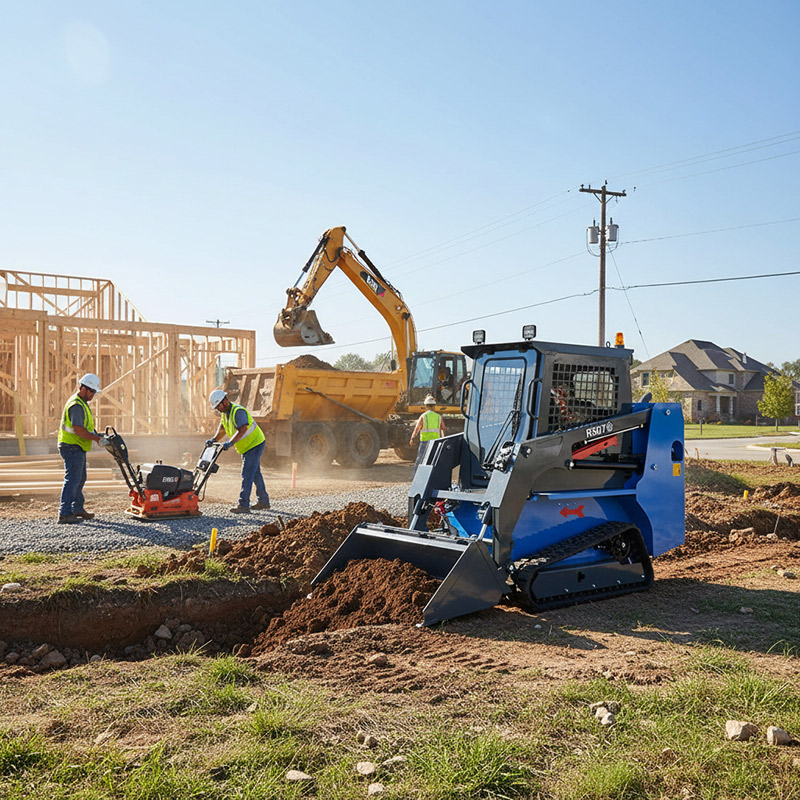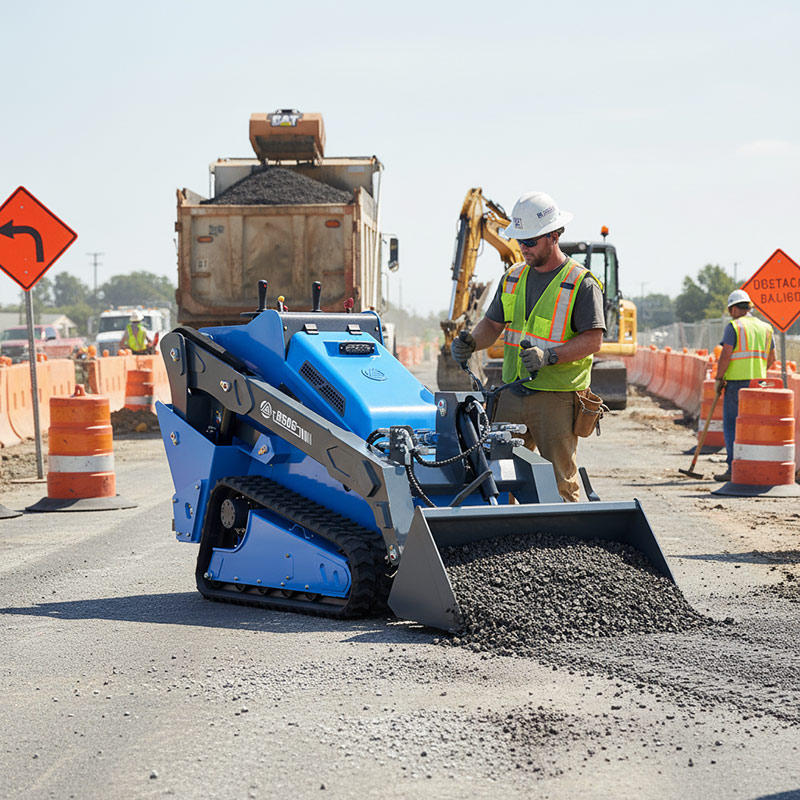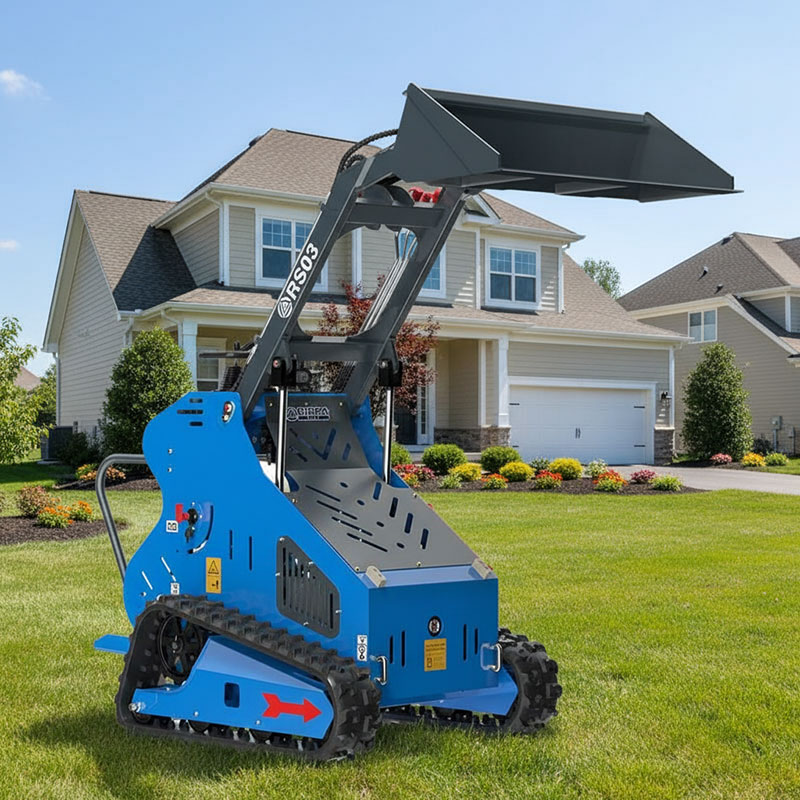5 Ways to Use a Skid Steer
Agricultural Applications
Skid steer loaders were originally invented for farm work, and they continue to be one of the most valuable tools in agricultural operations today. Their compact size and strong hydraulic power make them ideal for handling daily farm tasks. With a bale spear attachment, farmers can easily move and stack hay bales, increasing efficiency in livestock feeding operations. When connected with a rotary cutter, a skid steer can quickly clear overgrown fields, fence lines, or pasture paths, saving hours of manual labor.
Attachments like post hole augers make building fences much easier by drilling clean, deep holes for posts. Farmers can also use the auger to plant trees or install vineyard poles. With the right bucket attachment, skid steers are perfect for barn cleaning, manure handling, and transporting feed or soil. Their ability to fit into tight spaces like barns and poultry houses makes them highly useful on small and large farms alike.
Construction Work
One of the most common uses of skid steers is on construction sites. These machines are known as the “workhorses of the jobsite” because they can handle everything from heavy lifting to detailed finishing work. Contractors use skid steers for site preparation, clearing debris, and leveling ground before laying foundations.
With a wide range of construction attachments available, these machines can break concrete, carry building materials, and even handle demolition work. A hydraulic breaker attachment can smash concrete slabs, while a grader blade helps shape driveways or foundations. Their maneuverability and strength make skid steers essential equipment for any construction company.

Excavation Tasks
For digging and earthmoving projects, both skid steers and compact track loaders (CTLs) are excellent tools. They offer the hydraulic power needed to perform digging, trenching, backfilling, and grading. A trencher attachment can create narrow trenches for utility lines and irrigation systems with ease.
The backhoe attachment transforms the skid steer into a mini excavator, allowing it to dig deeper and handle more complex excavation tasks. When it comes to moving soil or gravel, a standard or heavy-duty bucket works perfectly. Whether preparing ground for landscaping or digging drainage ditches, skid steers offer outstanding efficiency.
Roadwork and Maintenance
Skid steers and compact track loaders are often used in road construction and repair projects. Their design allows them to move across uneven surfaces while carrying heavy loads. Road crews use dozer blades to push soil and shape roadbeds. With a side dump bucket, materials like gravel or asphalt can be dumped evenly along a path, speeding up road building or repairs.
For compacting soil layers before paving, operators can use a vibratory roller attachment. This ensures that each layer of earth is properly packed and stable. These versatile machines also help dig drainage ditches along roadsides and clear debris from construction zones.

Landscaping Projects
In landscaping, a skid steer is considered a must-have tool due to its versatility and maneuverability. Landscapers use it to move topsoil, mulch, rocks, and plants around job sites quickly. Pallet forks make it easy to unload landscaping materials like pavers or sod, while standard buckets handle dirt and gravel transport.
With attachments like tillers and soil conditioners, a skid steer can prepare flower beds, aerate soil, and level uneven ground. It can also be used for tree planting and stump removal. Compact track loaders are especially useful in landscaping because their rubber tracks minimize ground disturbance and protect delicate turf or landscaped areas.



